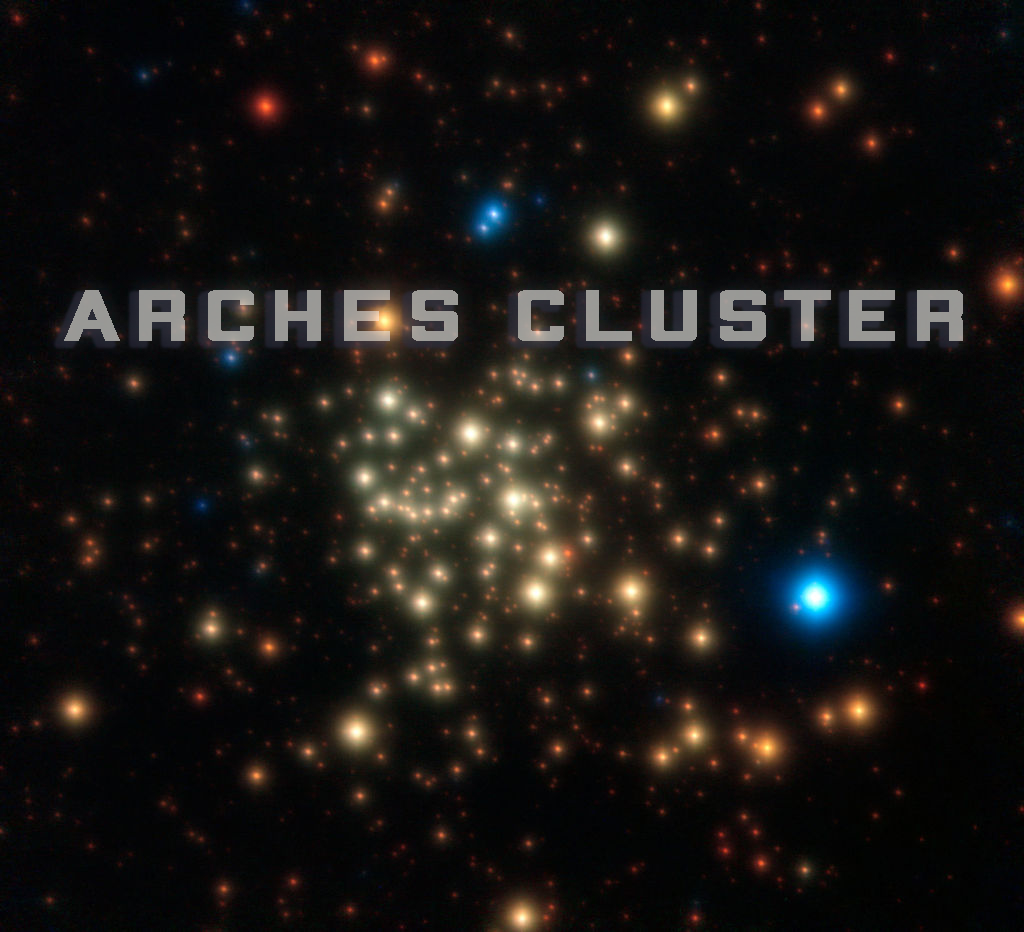Distance, Size and Mass
The Arches Cluster is located around 25,000 light years away from Earth and only about 100 light years from the centre of the Milky Way. The cluster is thought to be around 2.5 million years old. It offers insights into star formation in an environment close to the Galactic centre.
The cluster is heavily obscured by dust in the visual bands and cannot be seen with the naked eye. It can however, be observed in infrared, radio and X-ray bands. It is extremely dense and contains thousands of stars. Including around 150 hot young stars packed within a radius of 1 light year.
It is a bit younger than the nearby Quintuplet Cluster, but considerably denser and larger. Only stars earlier and more massive than O5 have evolved away from the main sequence. While the Quintuplet Cluster includes a number of hot supergiants as well as a red supergiant and three luminous blue variables.
The mass of the Arches Cluster is equivalent to more than 10,000 Suns. That makes it 10 times heavier than typical open clusters in our galaxy. Its right ascension is 17h 45m 50.5s and its declination is –28° 49′ 28″.
Astronomer Donald Figer used NASA’s Hubble Space Telescope to observe about a thousand stars in the Arches cluster. He found no stars over 150 solar masses. This suggests this is the upper limit of stellar mass in the current era of the universe. Despite a statistical expectation that there should be several.
Composition and Stars
The Arches Cluster contains about 135 large, massive, young, extremely hot stars and thousands of less massive members.
The most massive stars in the cluster are the thirteen Wolf-Rayet stars, which are extremely hot, highly luminous stars showing prominent emission lines of highly ionised helium and nitrogen or carbon. The Arches Cluster is believed to contain about 5 percent of all known Wolf-Rayet stars in the Milky Way. Some of these Wolf-Rayet stars have a mass more than 100 times that of the Sun and their stellar winds are enriched with helium and nitrogen.
The 28 brightest stars in the Arches Cluster are either H-rich WN7-9 stars or O-type supergiants with an age between 2 and 4 million years. At least 150 of the stars are some of the brightest stars ever discovered within our galaxy, but many of these young, hot stars have relatively short lives, burning their fuel in only a few million years before they die in supernova explosions to become supernova remnants.
What’s more, X-ray observations have revealed an envelope of gas around the cluster, heated to 60 million degrees by the cluster’s stars intense stellar winds that are colliding with the interstellar medium.
Formation
The Arches Cluster is believed to have formed in a short, but massive burst of star formation. It was discovered by Nagata et al. in 1995, and independently by Cotera et al. in 1996.
Image Sources:
- By ESO/P. Espinoza – http://www.eso.org/public/images/eso0921a/, CC BY 3.0, https://commons.wikimedia.org/w/index.php?curid=9641977
